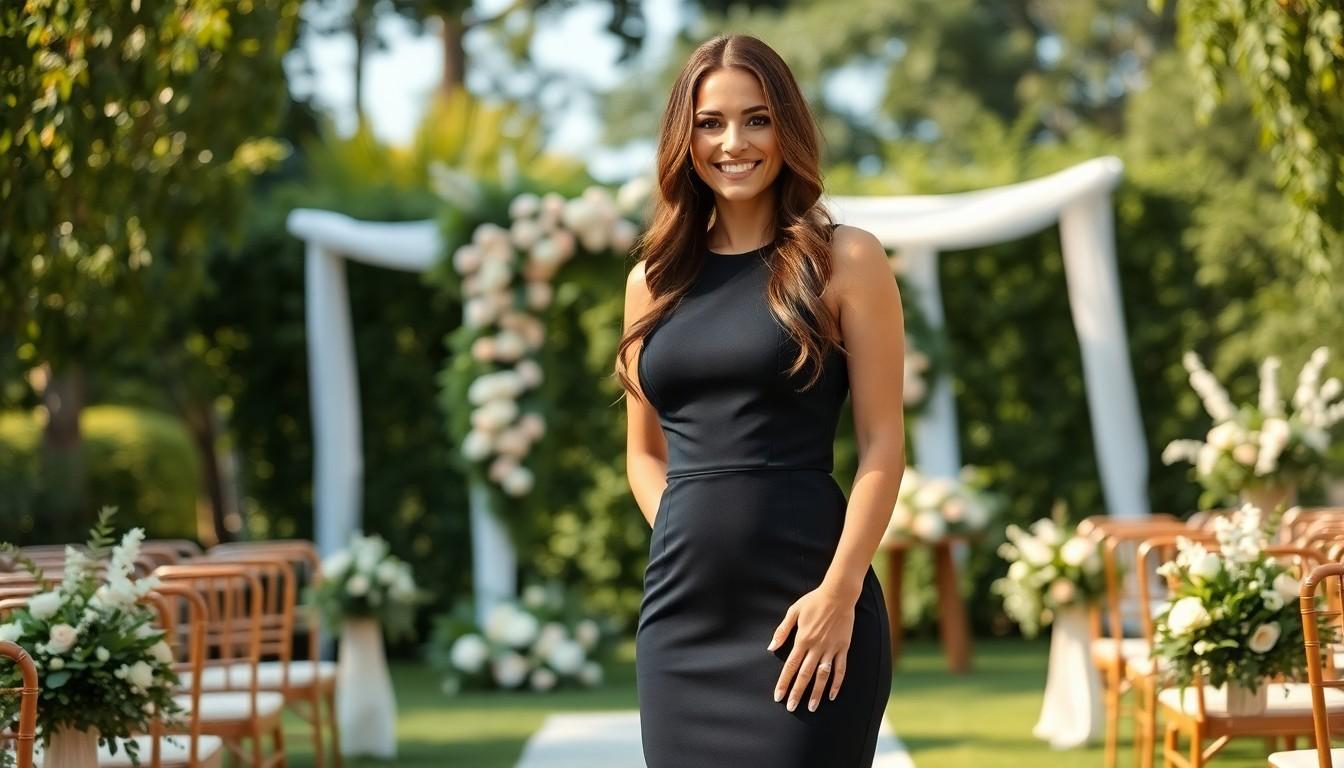The Best Fluffy Pancakes recipe you will fall in love with. Full of tips and tricks to help you make the best pancakes.

Can You Wear Black to a Formal Wedding? Discover Why It’s Now a Stylish Choice
When it comes to wedding attire, the age-old question of whether black is acceptable can leave guests in a stylish quandary. Is it a fashion faux pas or a chic choice? Picture this: you walk into a formal wedding, and all eyes are on you—not because you’re the one with the questionable outfit, but because you nailed that sleek black ensemble.
Can You Wear Black to a Formal Wedding
Formal wedding attire often follows specific traditions and guidelines. Understanding these can clarify the appropriateness of various color choices, including black.
Traditional Color Choices
White typically symbolizes purity and has long been the bride’s color of choice. Guests frequently wear shades like navy, grey, or pastels. These colors align with the celebratory atmosphere while honoring the couple’s special day. Bright colors also find acceptance, reflecting joyful sentiments. Guests avoid black due to its association with mourning. Nevertheless, adhering to traditional expectations is vital.
Modern Interpretations
Modern weddings embrace diverse styles, shifting traditional notions. Many now favor black for its elegance and versatility. Couples often welcome personal expression among attendees, allowing for darker hues. Guests frequently sport chic black outfits, transforming the color into a symbol of sophistication. Fashion trends evolve, and individuals confidently experiment with attire choice. Accepting black attire at formal weddings signals broader cultural acceptance and progressive traditions.
Can You Wear Black to a Formal Wedding?

Wearing black to a formal wedding invites curiosity. This color choice now sparks conversations about tradition and personal expression.
Cultural Perspectives
Cultural views on wearing black to weddings vary. In many Western societies, the color symbolizes mourning, making it less acceptable for celebrations. Countries like India embrace black as indicative of elegance and richness, often incorporating it into traditional attire. Conversely, in some Asian cultures, black holds negative connotations while other cultures welcome it for its versatility. These differing perceptions shape expectations for guest attire at weddings. Adapting to these cultural nuances enables guests to honor the couple’s preferences while expressing personal style.
Fashion Industry Insights
Insights from the fashion industry reveal black’s growing acceptance at weddings. High-profile designers showcase black wedding attire in collections, highlighting its elegance and modernity. Trends feature black gowns and suits, redefining formal wedding wear. Major fashion publications advocate for black attire, positioning it as chic and sophisticated. The shift in consumer preferences reflects a broader cultural movement towards inclusivity in formal wear choices. Incorporating black into wedding attire allows guests to convey confidence while remaining stylish. This change indicates a significant evolution in wedding fashion norms.
Styling Tips for Wearing Black at Weddings
Wearing black to a wedding can be both stylish and elegant. With the right choices, black attire can create a sophisticated look.
Accessories to Complement Black Outfits
Incorporating meaningful accessories elevates black outfits. Jewel-toned pieces, such as emerald or ruby, add a pop of color. Opting for metallic accents, like gold or silver jewelry, brings a touch of glamour. Stylish shoes can enhance the overall ensemble; consider choosing sleek heels or polished loafers. Additionally, a statement clutch can serve as a perfect finishing touch, balancing elegance and practicality.
Choosing the Right Dress Code
Understanding the dress code ensures appropriate attire. Formal events typically require long gowns or tailored suits in black. Semi-formal occasions allow for more flexibility; cocktail dresses or stylish separates fit well. Always consult the invitation for specific guidelines, as they often clarify expectations. When in doubt, reaching out to the couple or wedding party can provide clarity on the desired style.
Alternatives to Black Attire
Guests often look for stylish alternatives to black attire for formal weddings. Bold and vibrant colors make excellent choices.
Popular Color Options
Navy ranks high as a classic alternative to black, offering sophistication without the somber connotations. Burgundy provides rich and warm visuals that enhance the festive atmosphere. Additionally, emerald green stands out, adding a touch of luxury and elegance. Soft pastels, such as blush or mint, infuse a light and airy feel, harmonizing with the celebration. Guests can also explore jewel tones, which consistently evoke a sense of opulence while adding depth to their wardrobe. Ultimately, selecting colors that complement personal style and the wedding theme enhances the overall appearance.
Patterns and Textures
Patterns bring additional flair to wedding attire. Floral prints can express femininity and romance, creating a lively aesthetic. Stripes, when done tastefully, offer a modern twist while maintaining elegance. Checks or gingham can present a tailored yet relaxed feel suited for semi-formal settings. Opting for textured fabrics like lace or chiffon elevates the outfit’s appeal, introducing visual interest. Moreover, metallics make striking choices, shimmering under venue lights for added glamour. Combining different patterns and textures ensures a unique ensemble that respects the wedding’s formal tone while showcasing individuality.
Wearing black to a formal wedding can be a stylish and sophisticated choice. As cultural norms shift and fashion evolves, black attire is increasingly embraced for its elegance and versatility. Guests can confidently don black while expressing their personal style, provided they consider the couple’s preferences and the event’s dress code.
By incorporating thoughtful accessories and selecting the right outfit, black can elevate a guest’s appearance without overshadowing the celebration. Ultimately, the key lies in understanding the context and making choices that reflect both respect for the occasion and individual flair.




